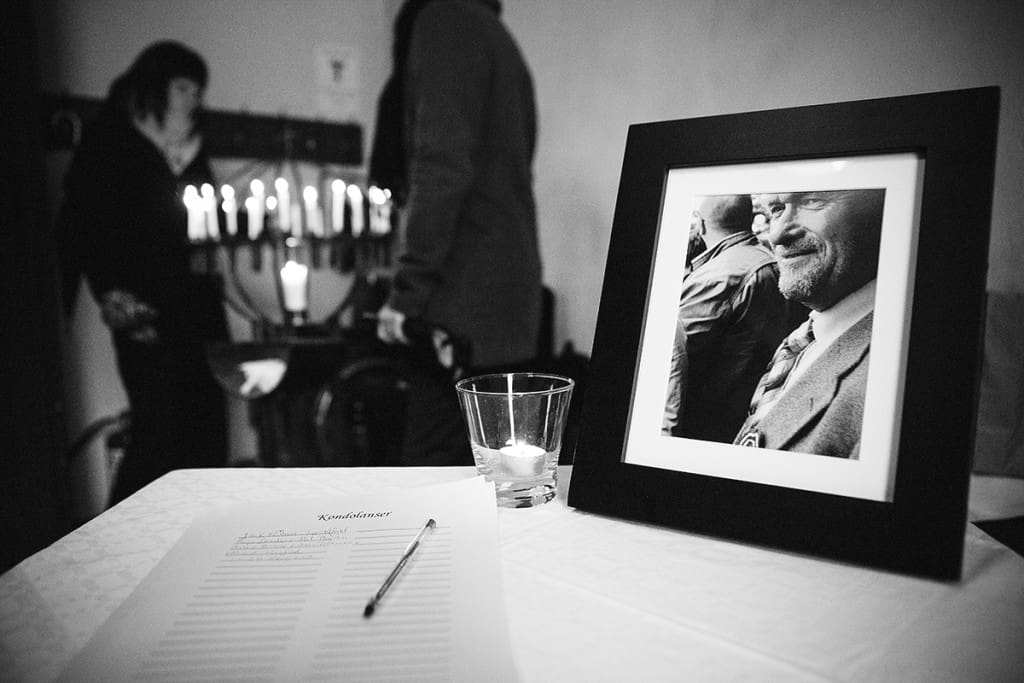
Funerals are a chance to reflect on a loved one that we’ve recently lost. It’s a chance for friends and family to come together and reminiscence on a loved one’s life, acknowledge contributions that person made, and extend condolences to the surviving kin.
Basics of Funeral Photography
Photographing a funeral in a sensitive, discrete way can offer families a chance to stay in touch with a loved one who’s recently left us.
Photos taken on the day of the funeral can be assembled and put into a photo album to send to family and friends who couldn’t make it to the funeral itself. Copies of the photo album can also be sent to close family to keep the loved one’s memory alive.
A camera without a flash is a tactful way for a funeral photographer to capture family members consoling one another as well as the ceremony of the funeral itself.
A professional photographer can take high-resolution pictures of the coffin and the pallbearers in order to cement the day in a hardcover photo album or password-protected digital archive.
The photos that make it onto the website’s online catalog can be vetted and approved by each family member. The process is kept respectful and inclusive of everyone’s wishes.
Although the techniques and technologies associated with funeral photography are relatively new, previous generations had similar ways of remembering lost loved ones.
For centuries, death masks, or plaster molds of a person’s face, were taken to remember loved ones by. The same underlying motive pervades today’s funeral photography.
Is Funeral Photography Difficult?
From a photographer’s standpoint, it can be. If this is a professional photographer’s first stint at photographing a hearse and funeral proceeding, then capturing a funeral on camera can be emotionally challenging. This, though, might be the exception.
Many funeral photographers talk about how easy photographing a funeral is compared to photographing a wedding.
At a wedding, everyone has a camera, and they know how to use it! Professional wedding photographers have to jostle for position, and the sheer act of taking professional-quality pictures in that chaotic an environment can be both challenging and stressful.
Taking photographs at a funeral, by contrast, is more discrete, and funerals can often be more uplifting affairs than you might at first imagine. If someone has lived a long and rewarding life, a funeral is more often than not an opportunity to share stories about that person’s personal triumphs and joys.
When you think about it, of course a funeral would be easier to work with compared to a wedding. A funeral is dedicated to remembering all of the positive attributes about someone whereas a wedding is bogged down by concerns about what everyone is wearing and who spent the most on wedding gifts.
Purposes Served by Funeral Photography
Oftentimes, grieving friends and family are unable to take photos of a funeral themselves, but would be open to the idea of a professional photographer discretely compiling a photo album for memory’s sake or for those who couldn’t attend the funeral in person.
Another impetus for close family hiring a funeral photographer is for posterity. Discretely taken funeral photographs are a way for those not yet born to experience past aspects of their own family’s history. The surviving family, moreover, usually frames their departed loved one in the light that he or she would have wanted.
Funerals are often a relaxed environment in which everyone is themselves and enjoying each other’s company. Photo albums documenting the day, therefore, showcase a whole section of the family tree for future generations to experience.